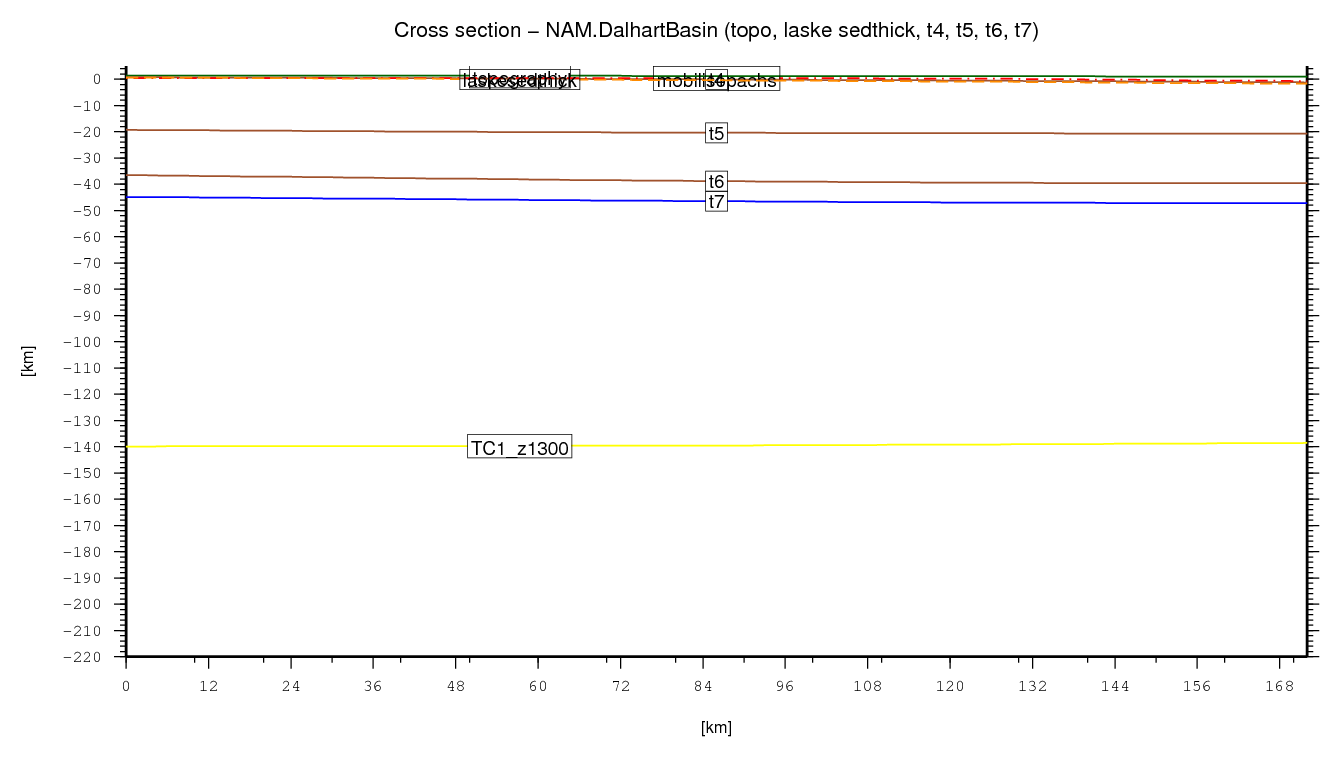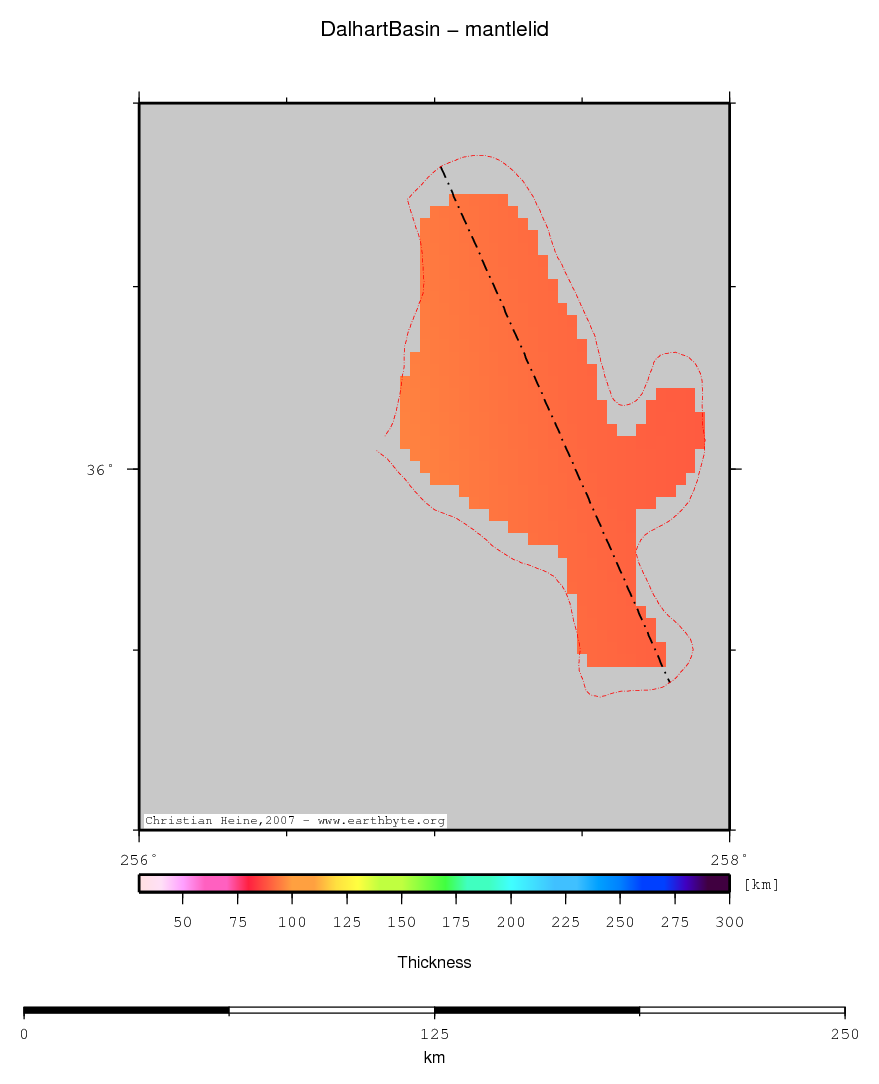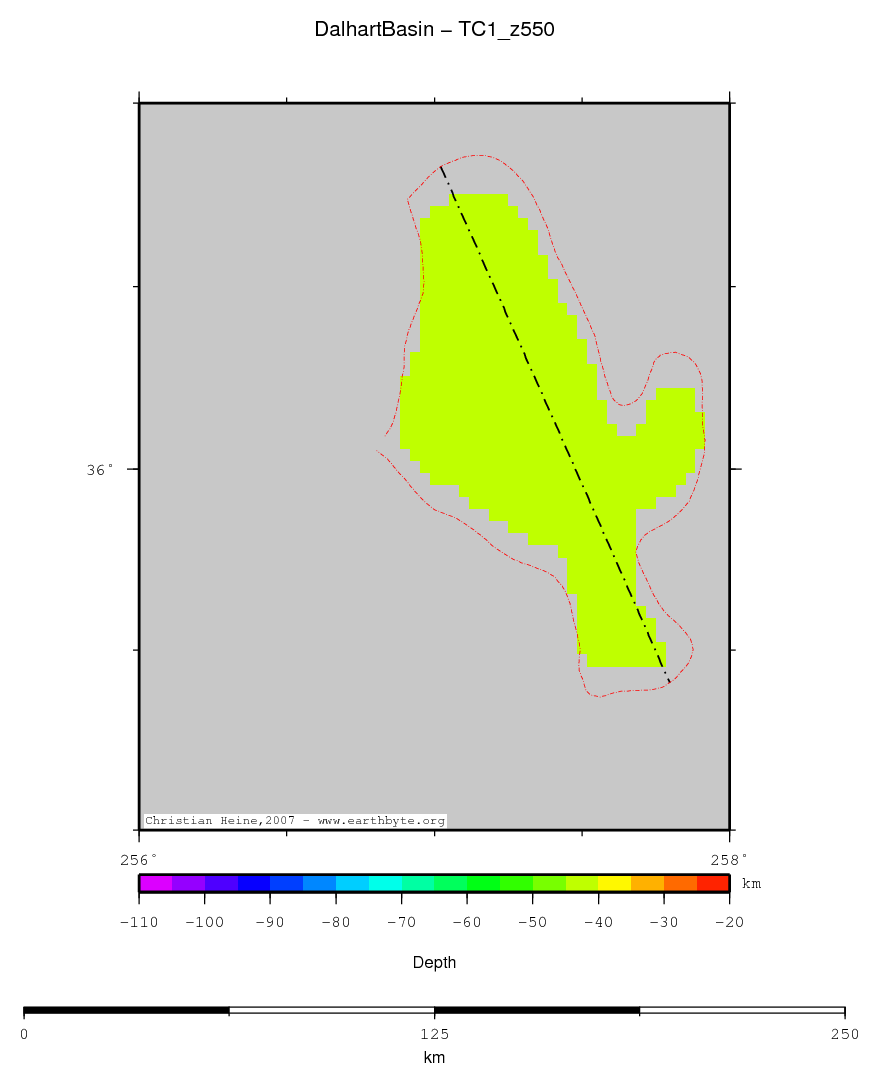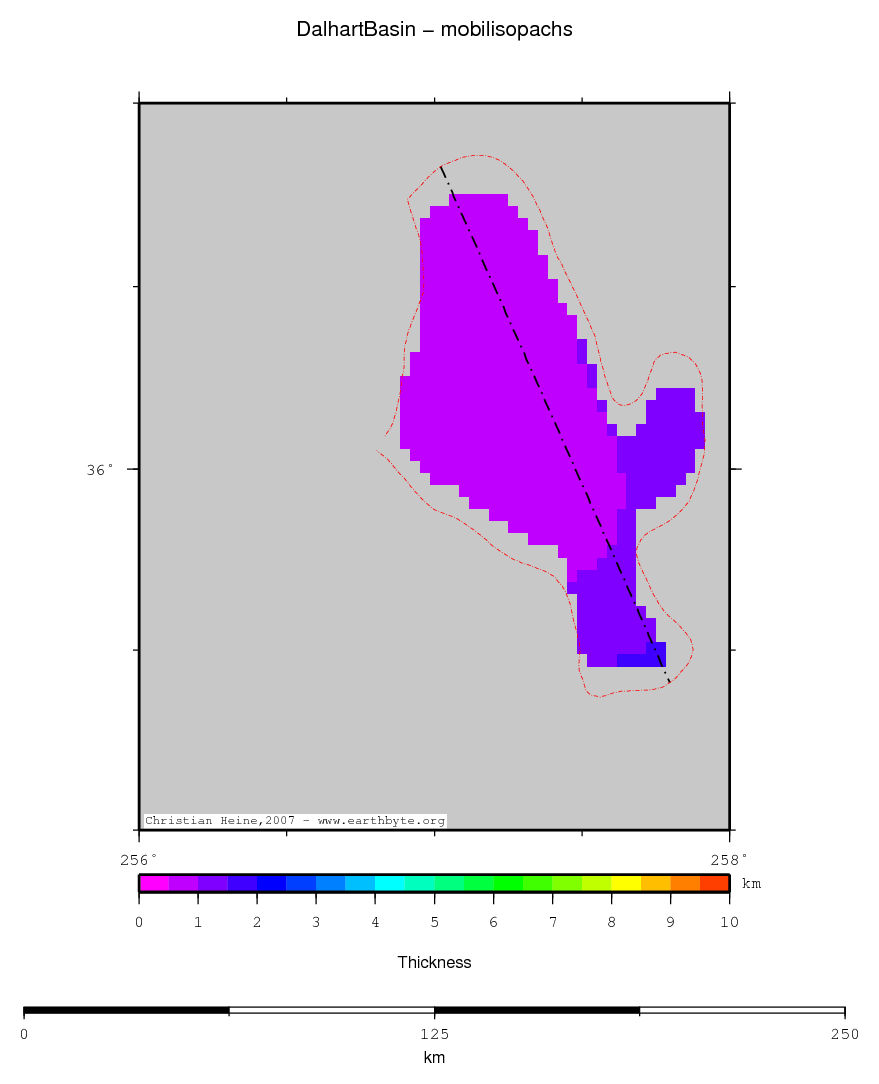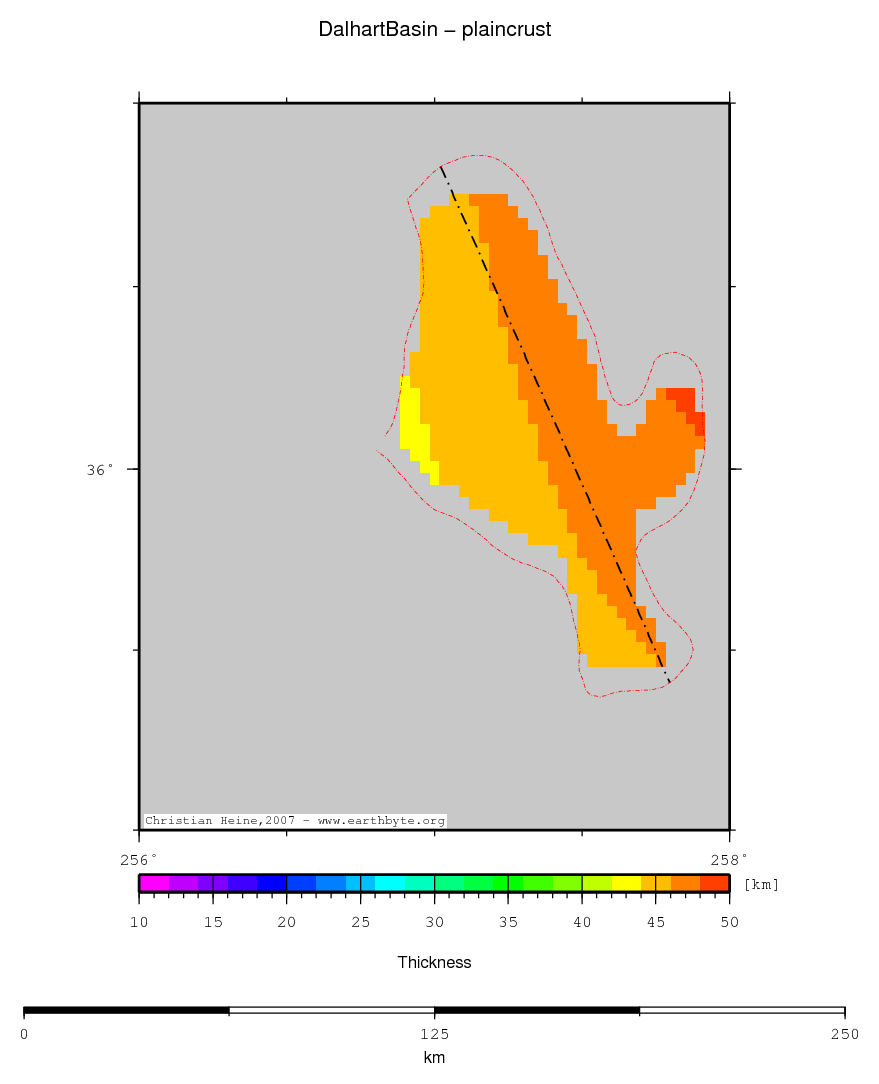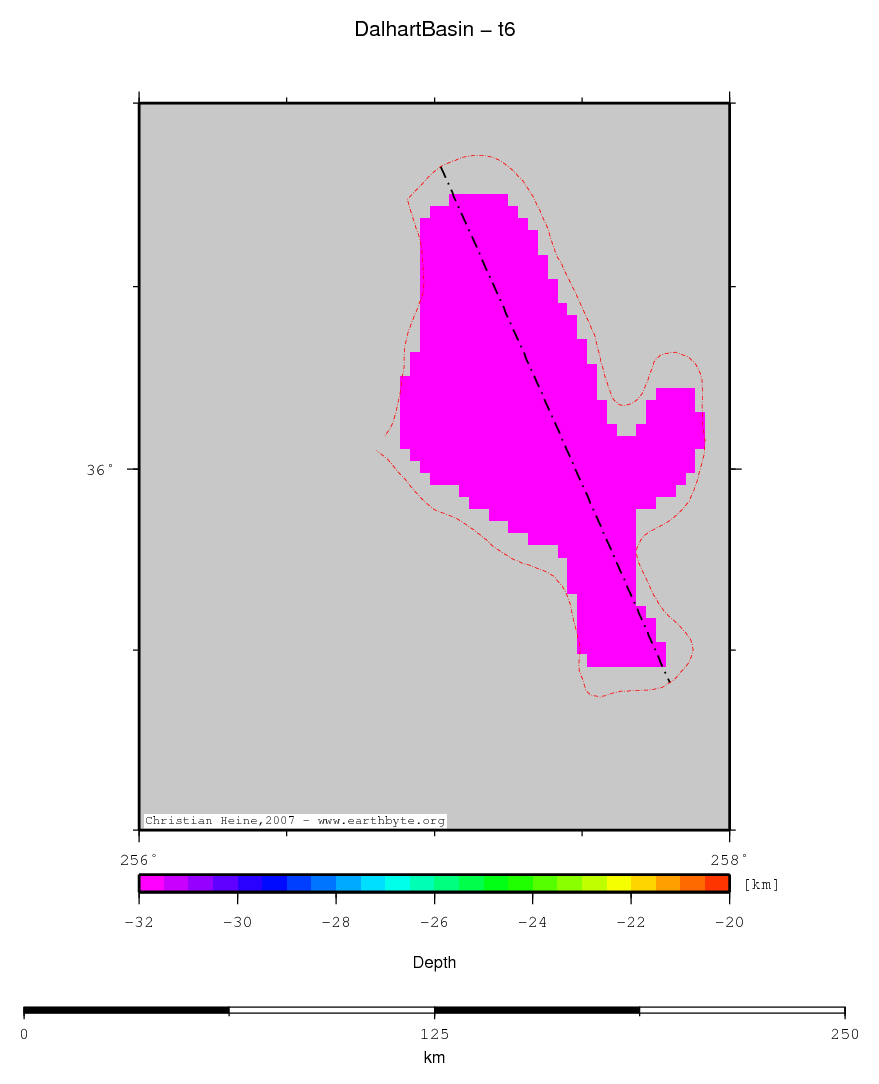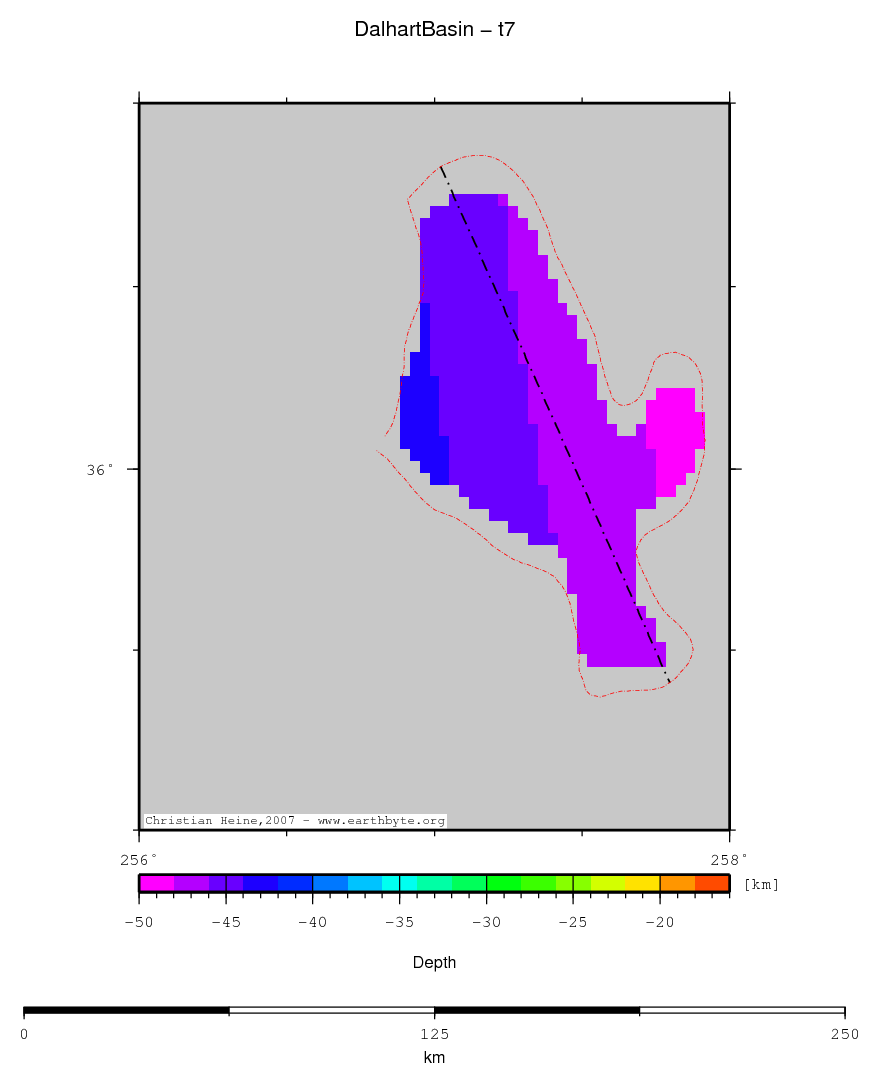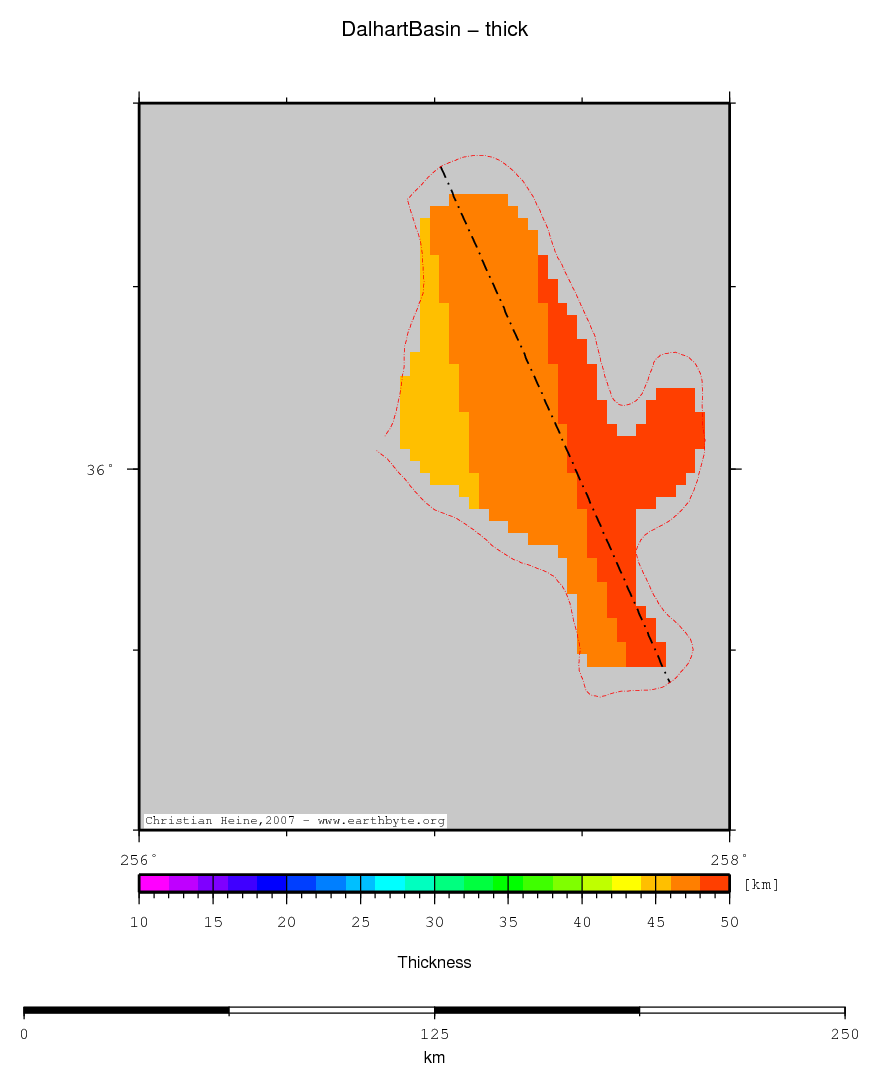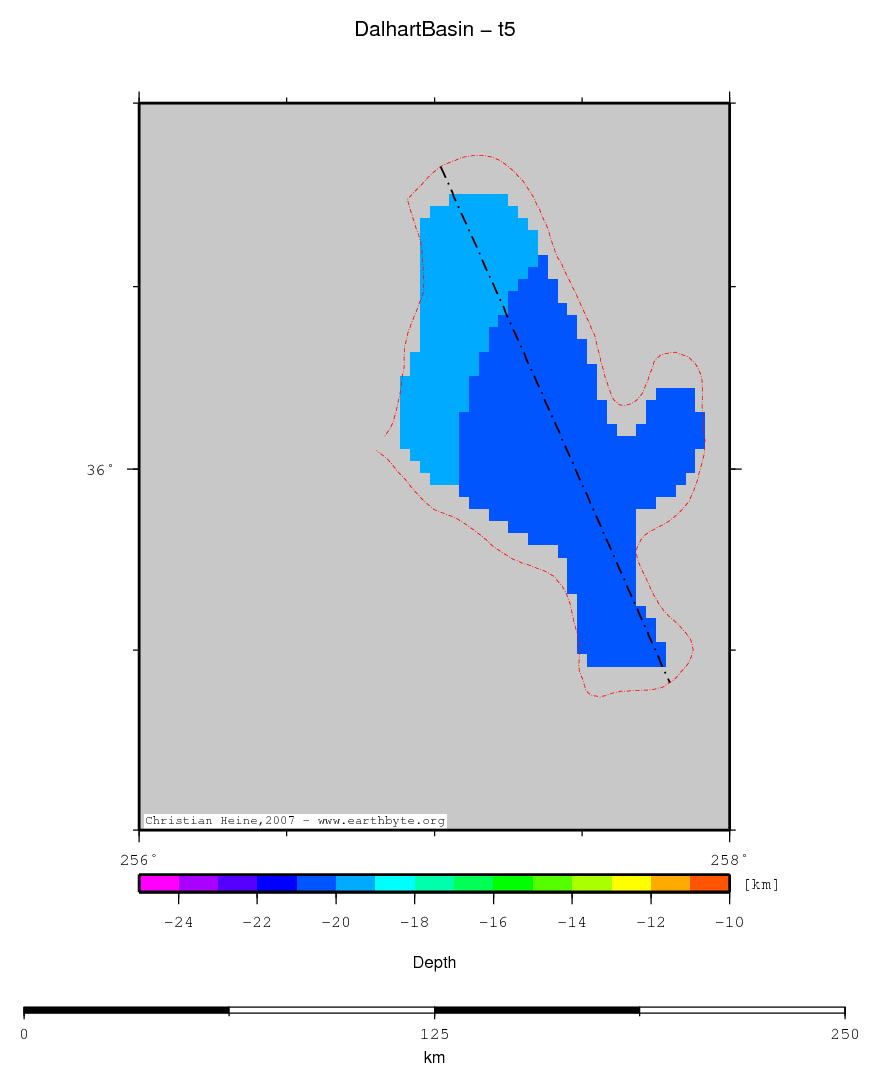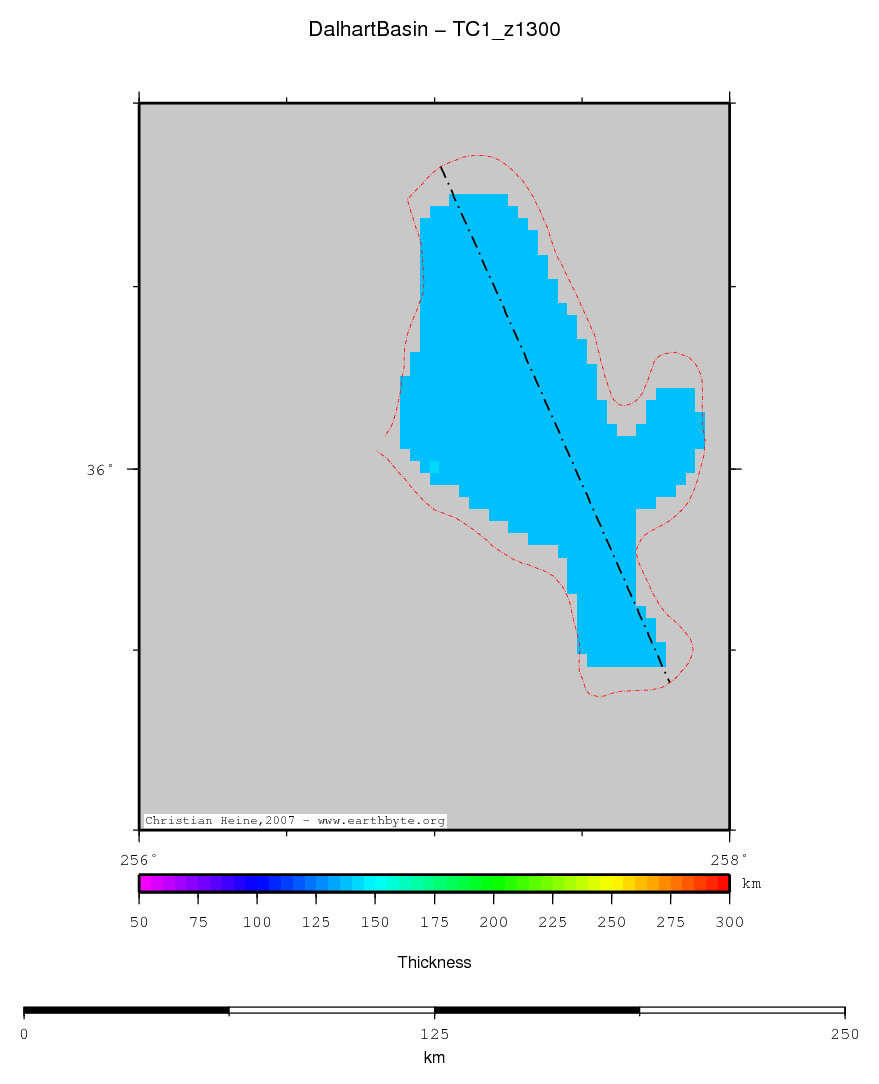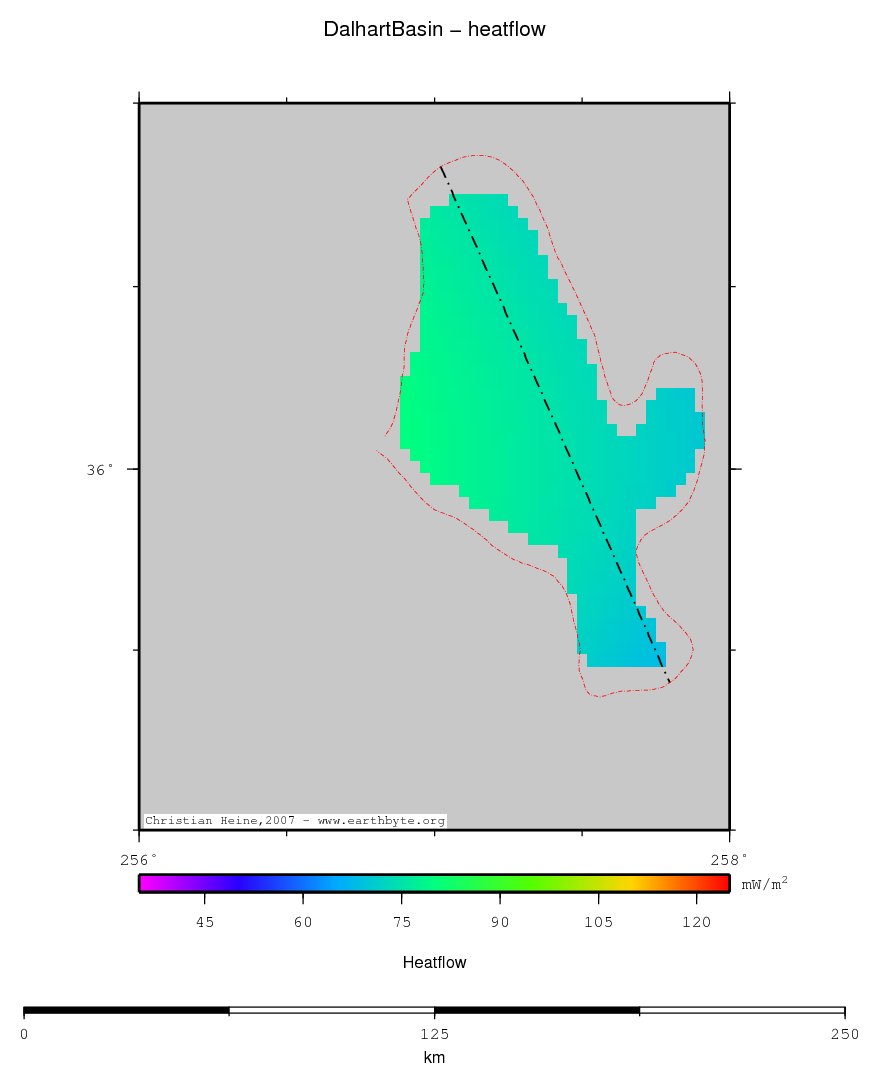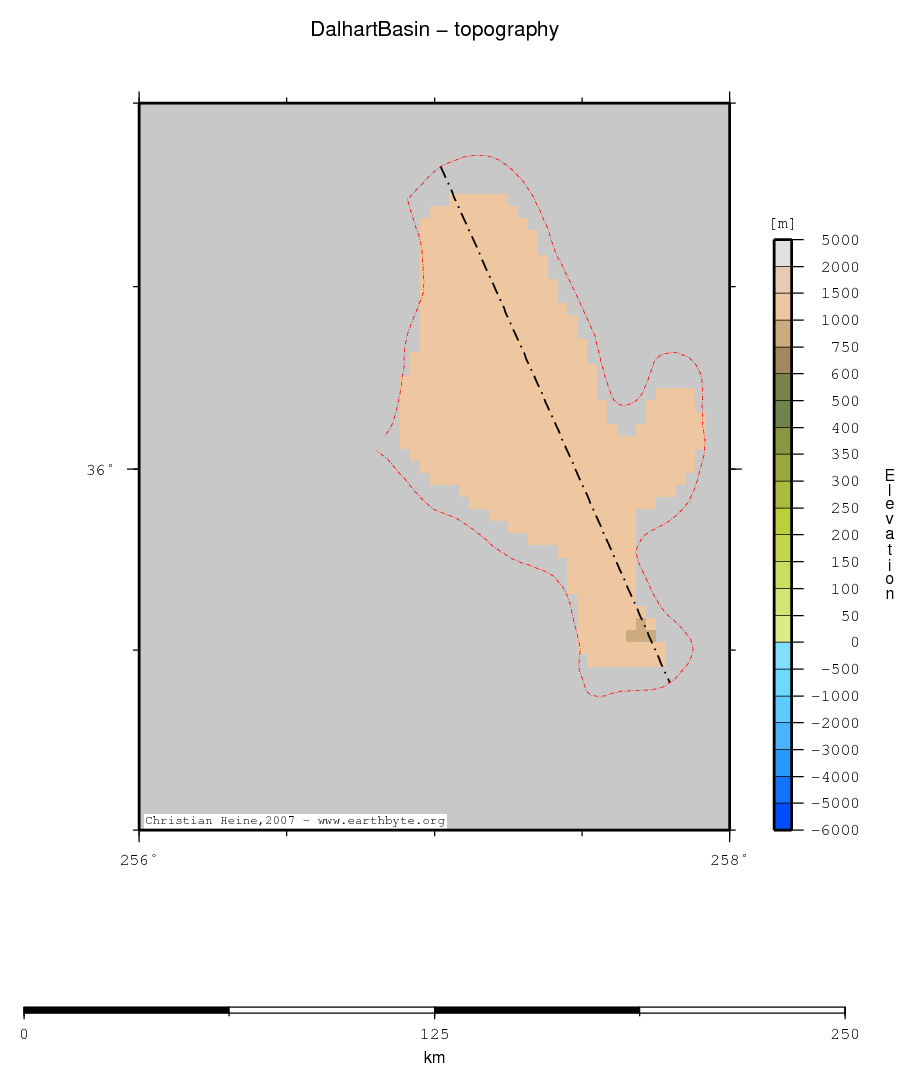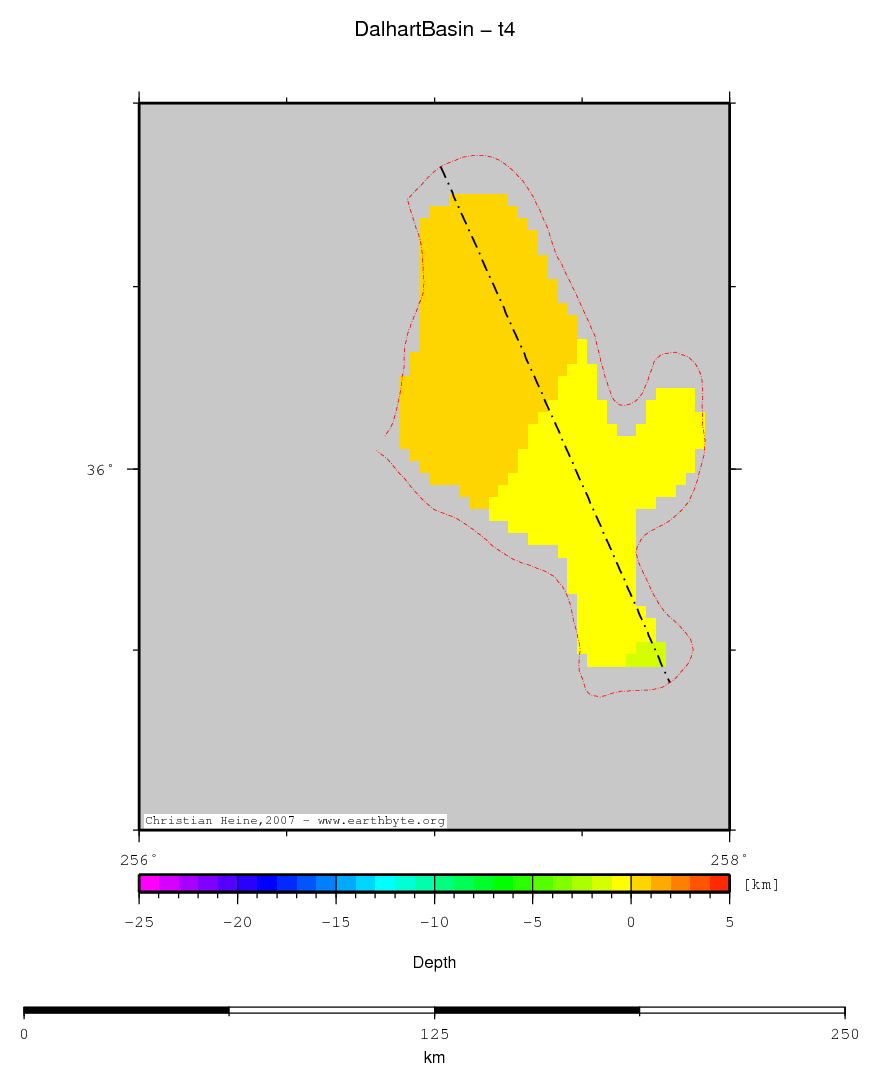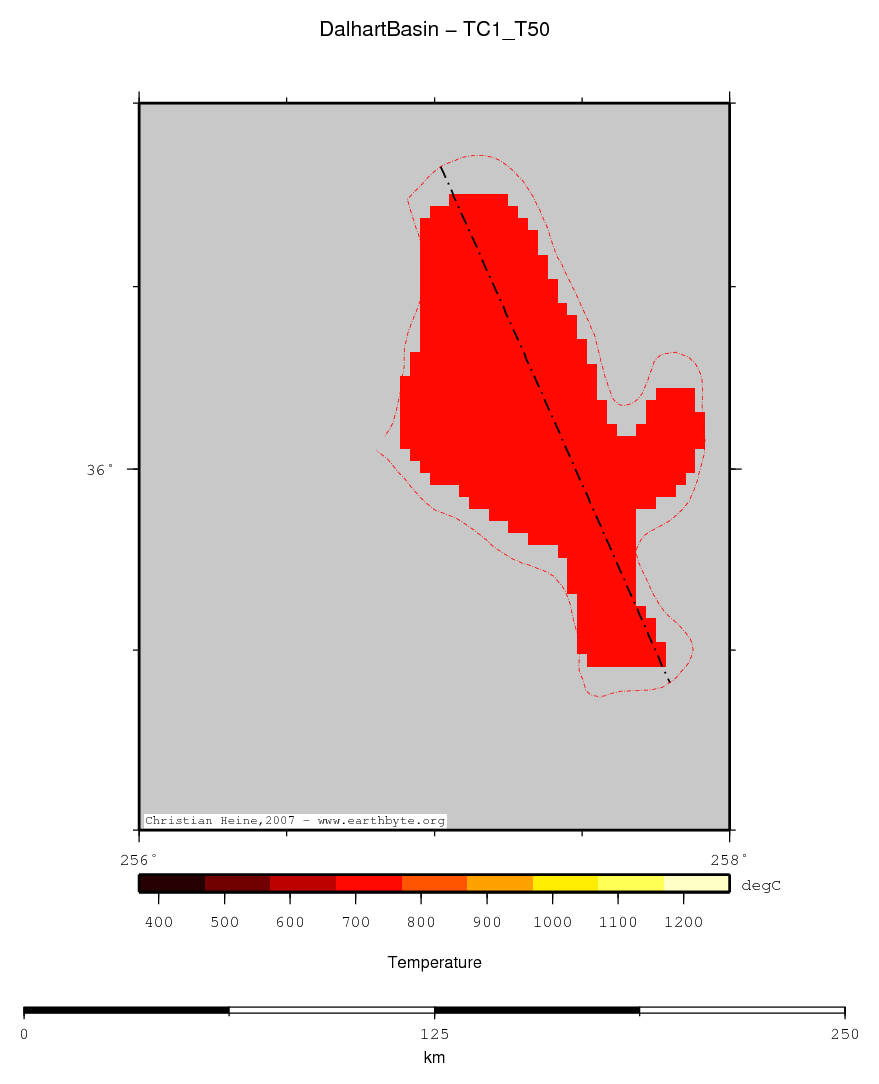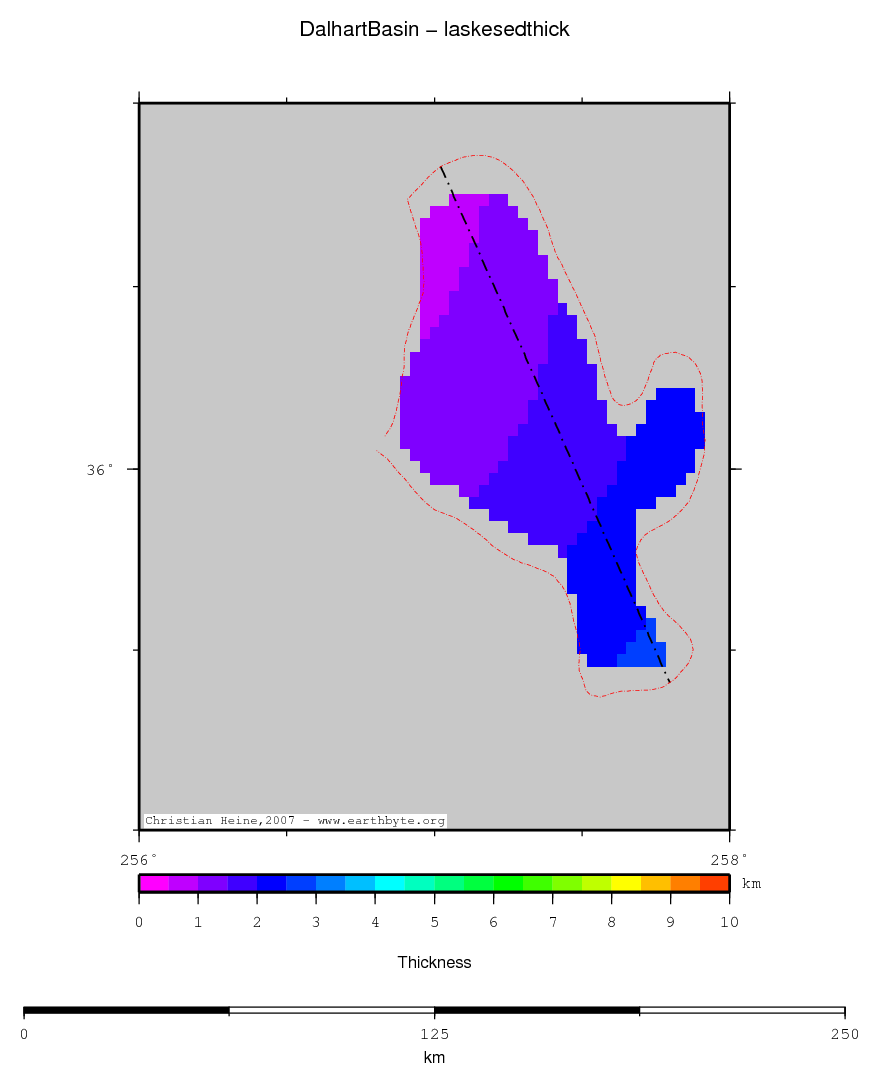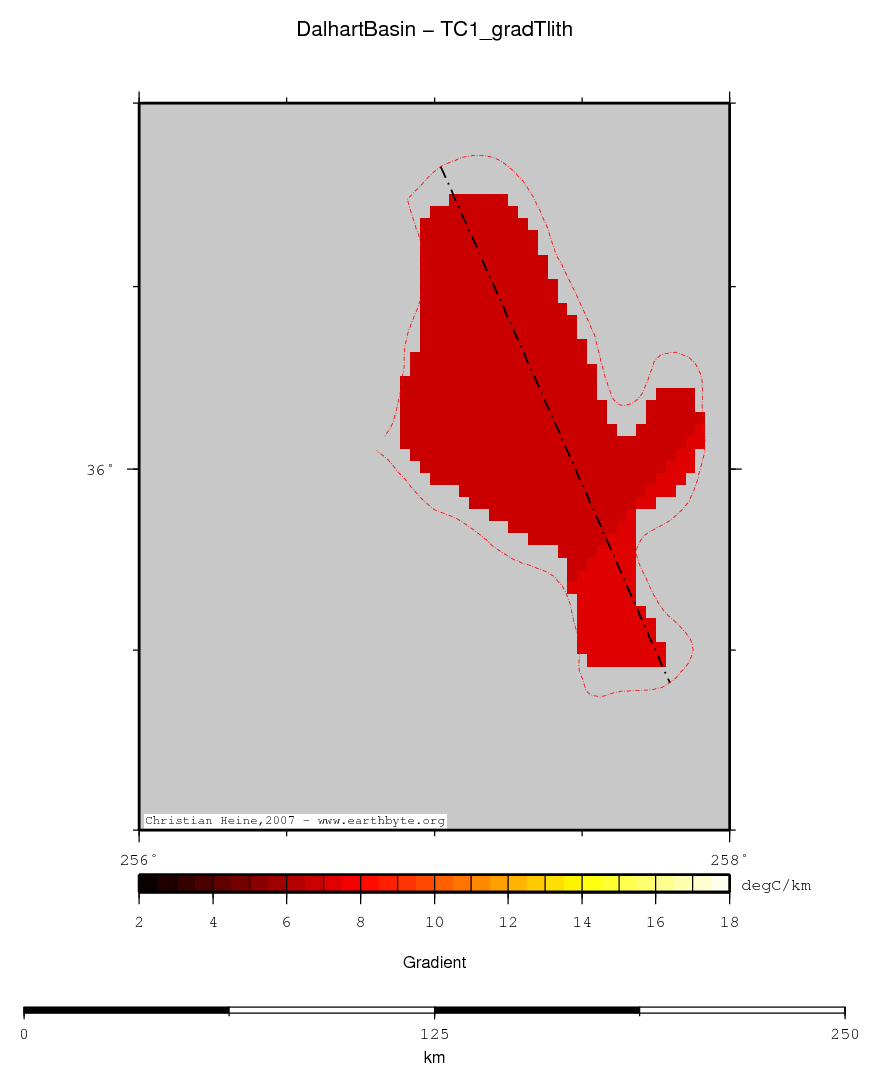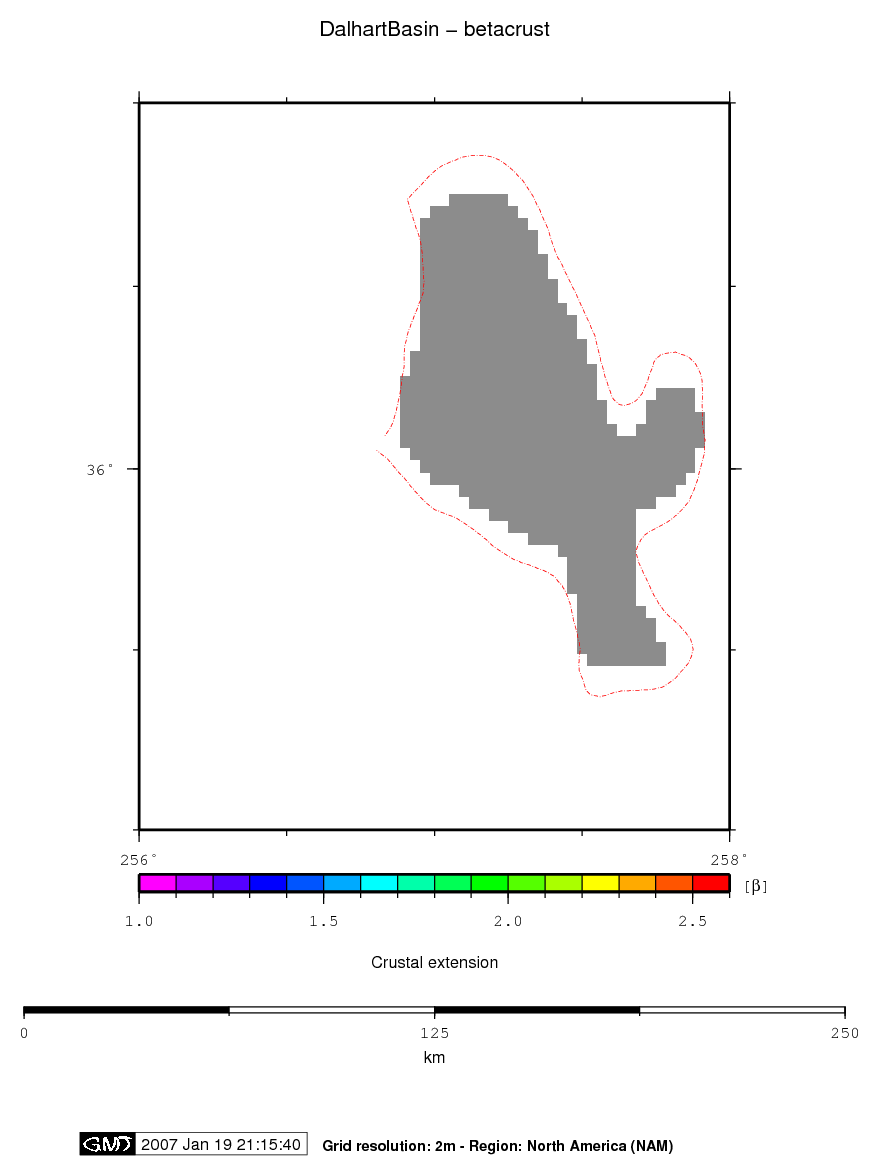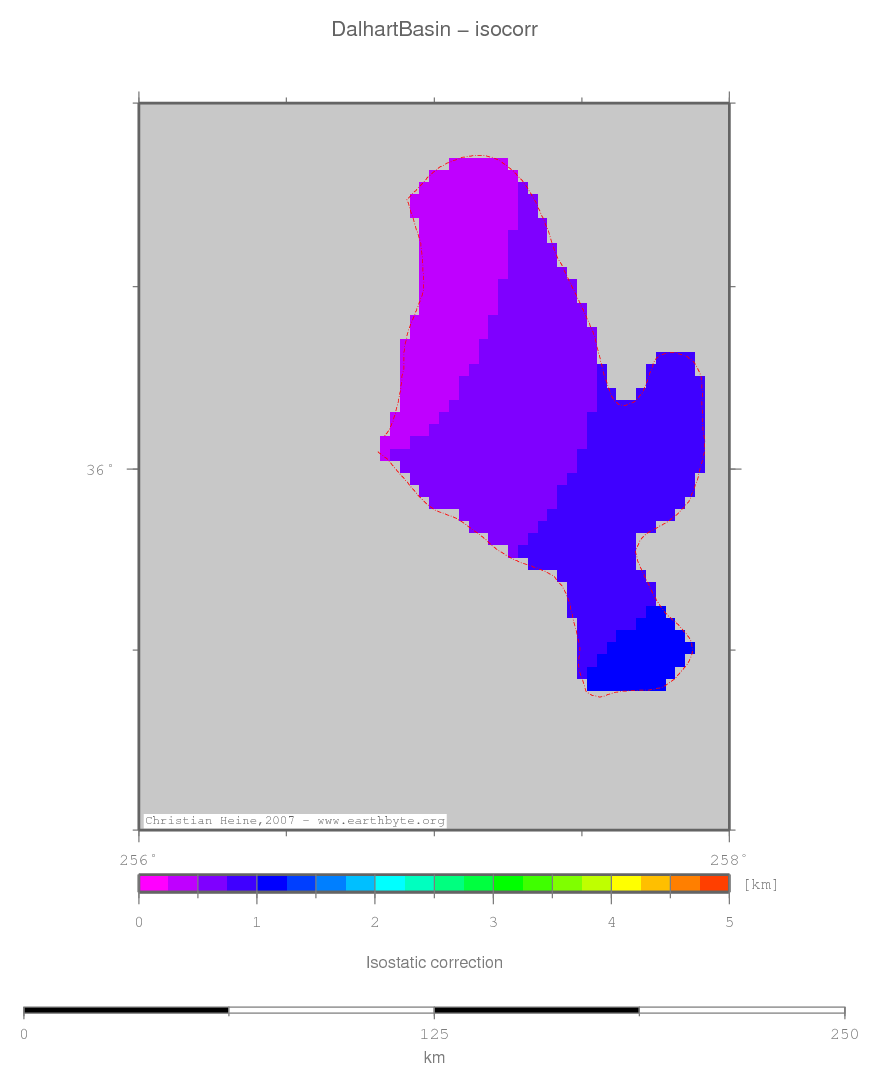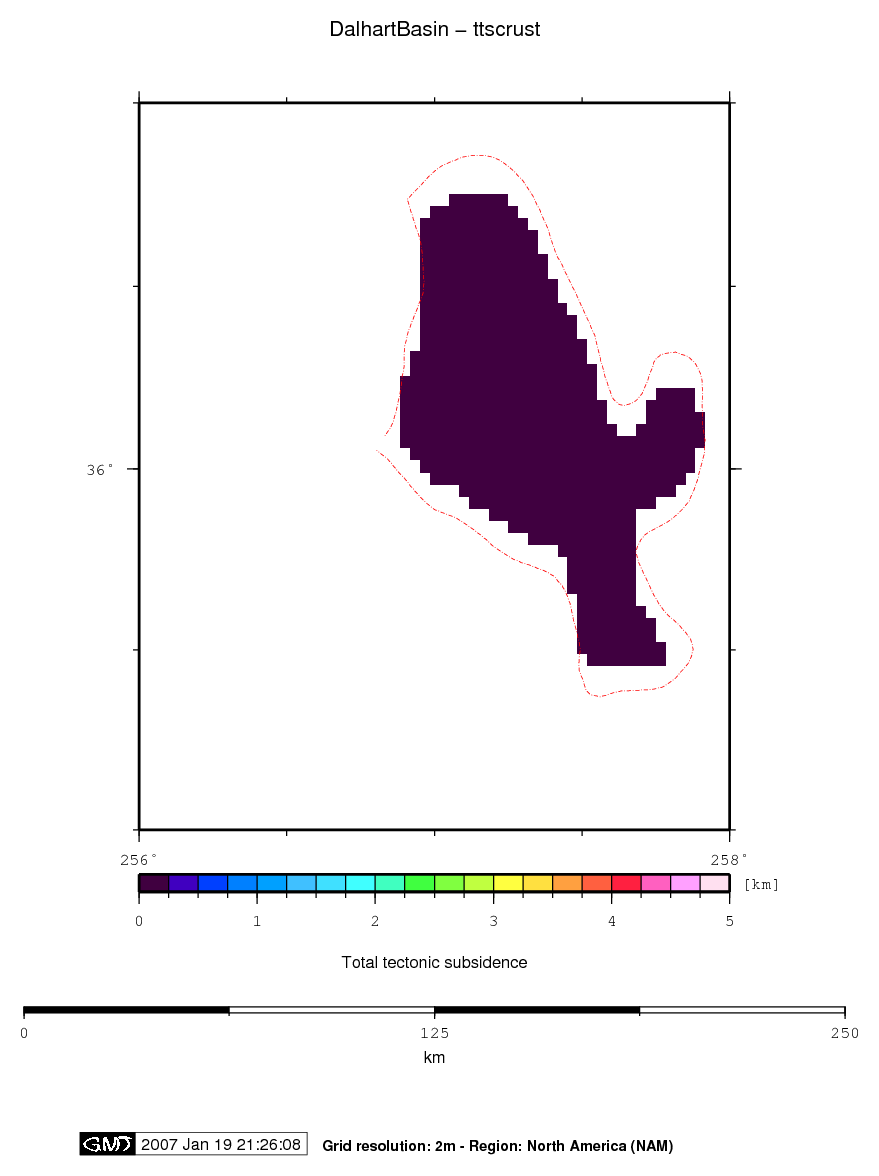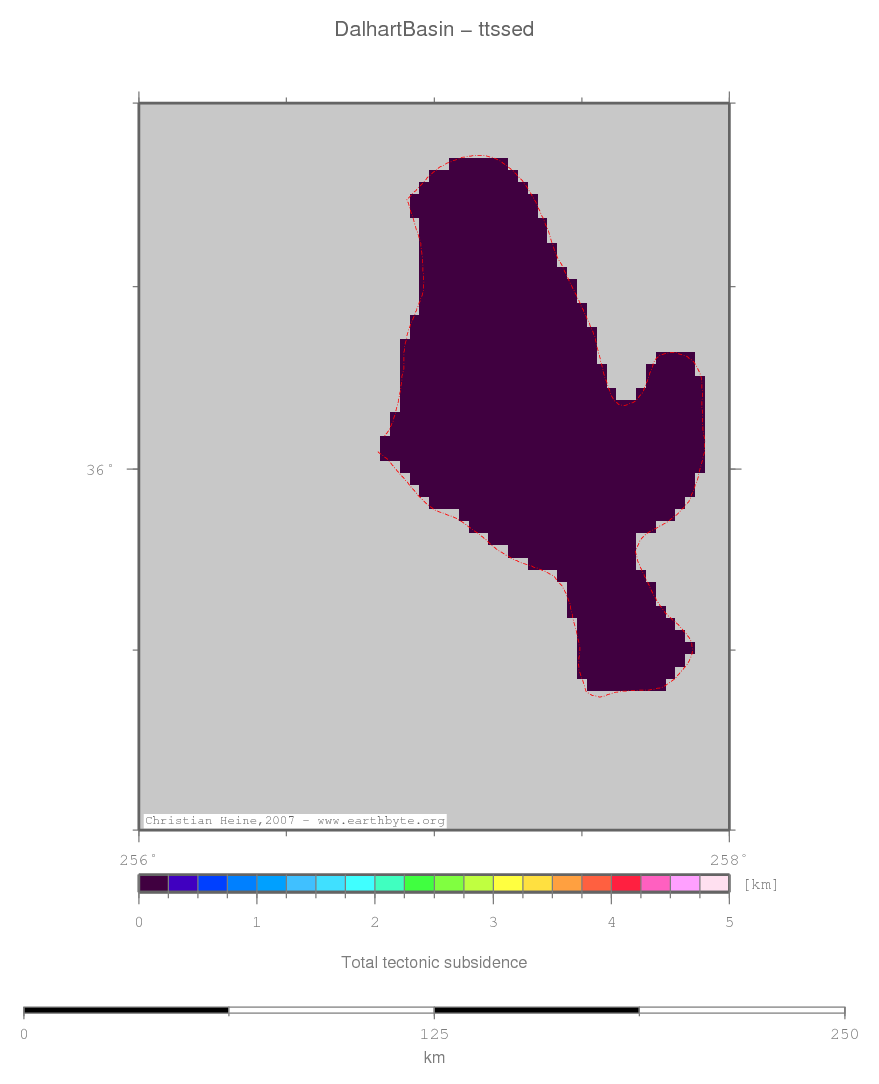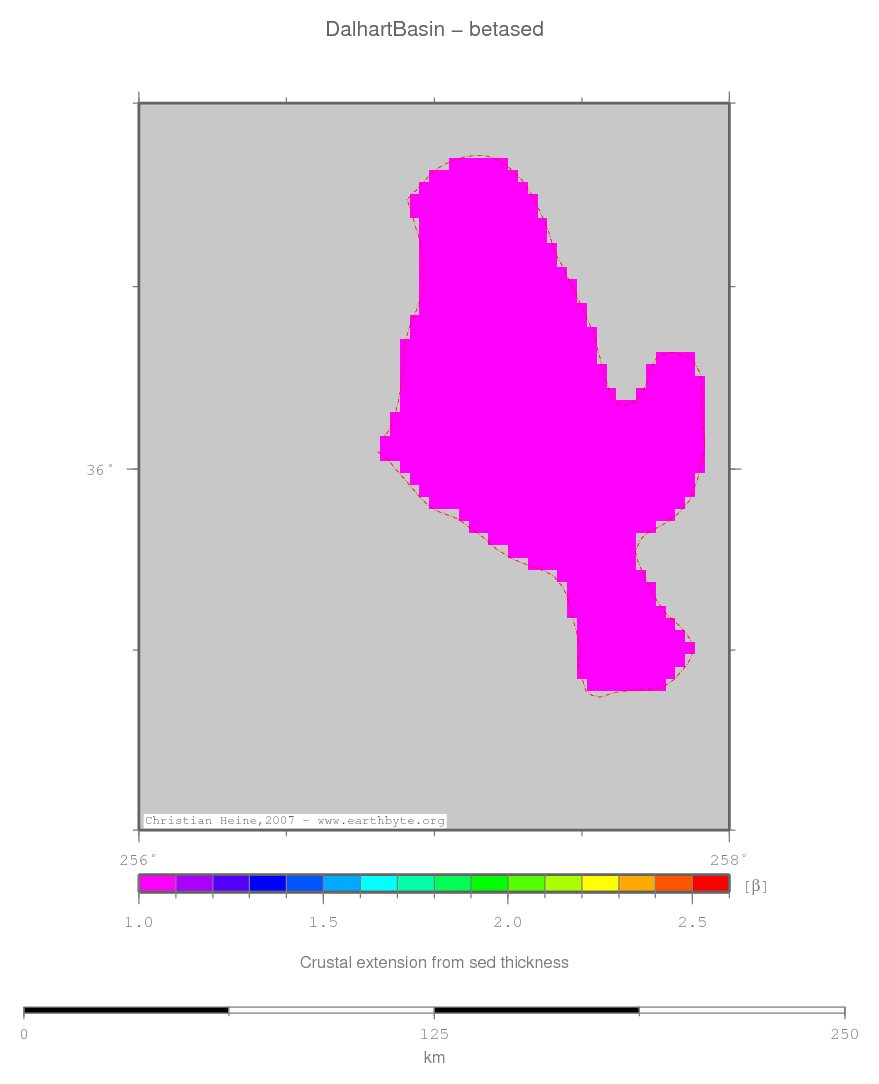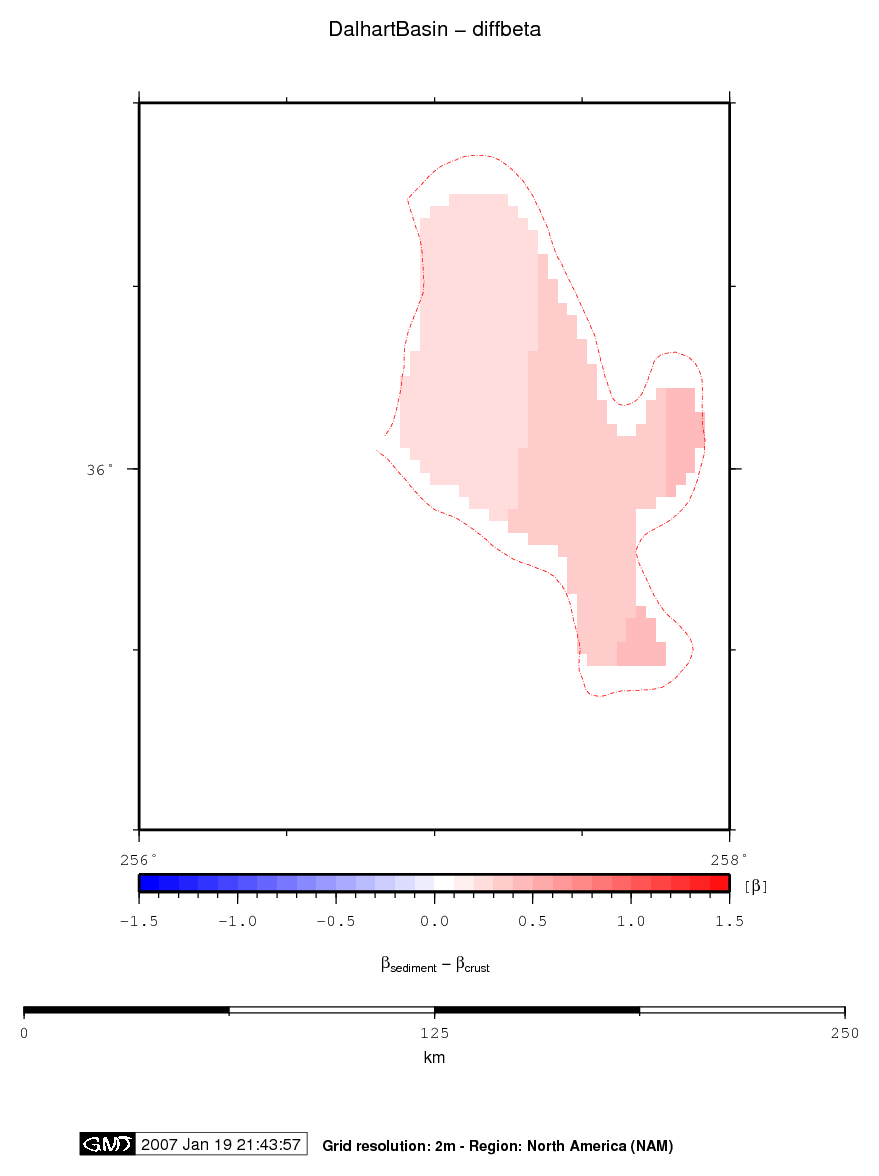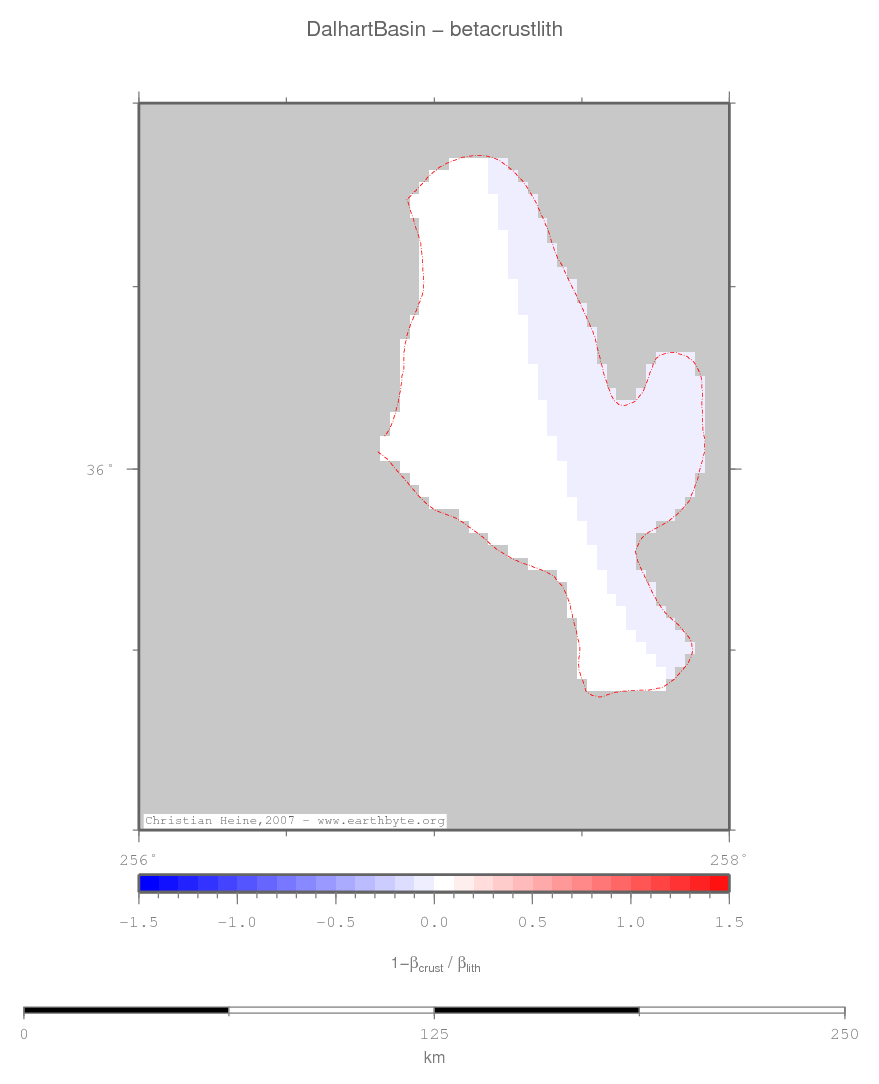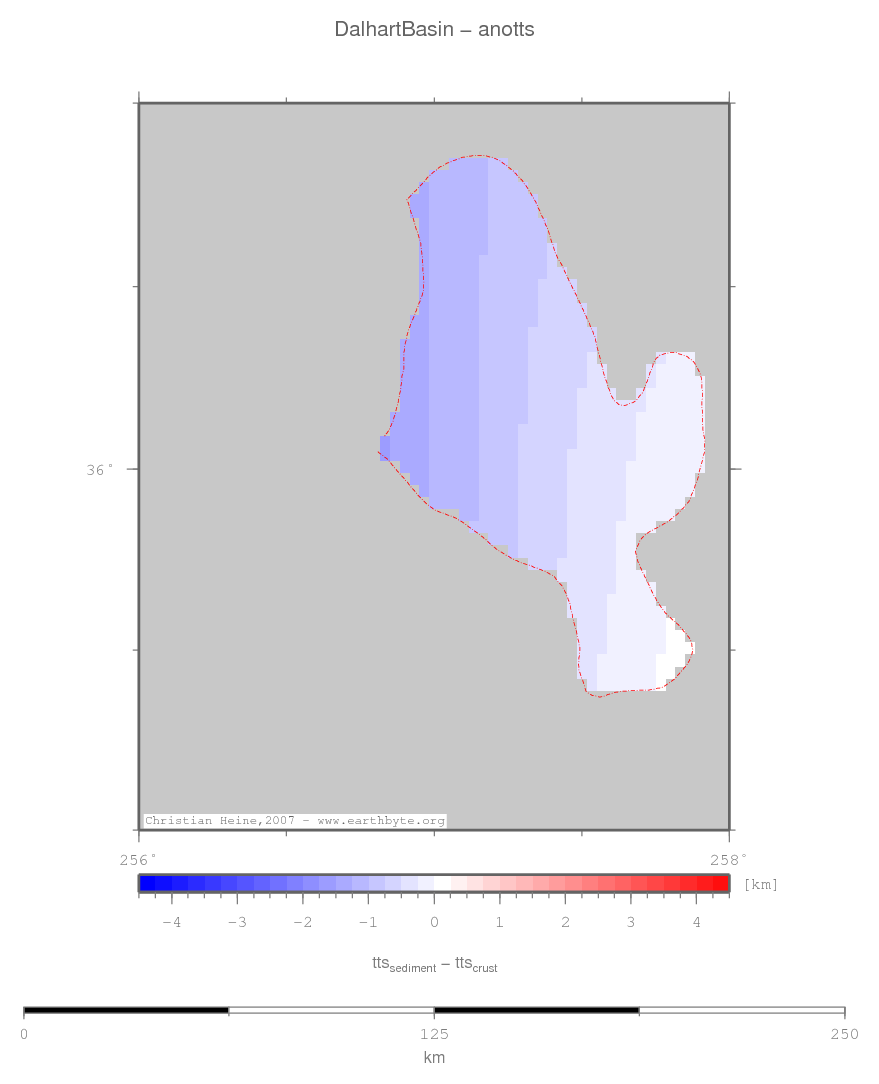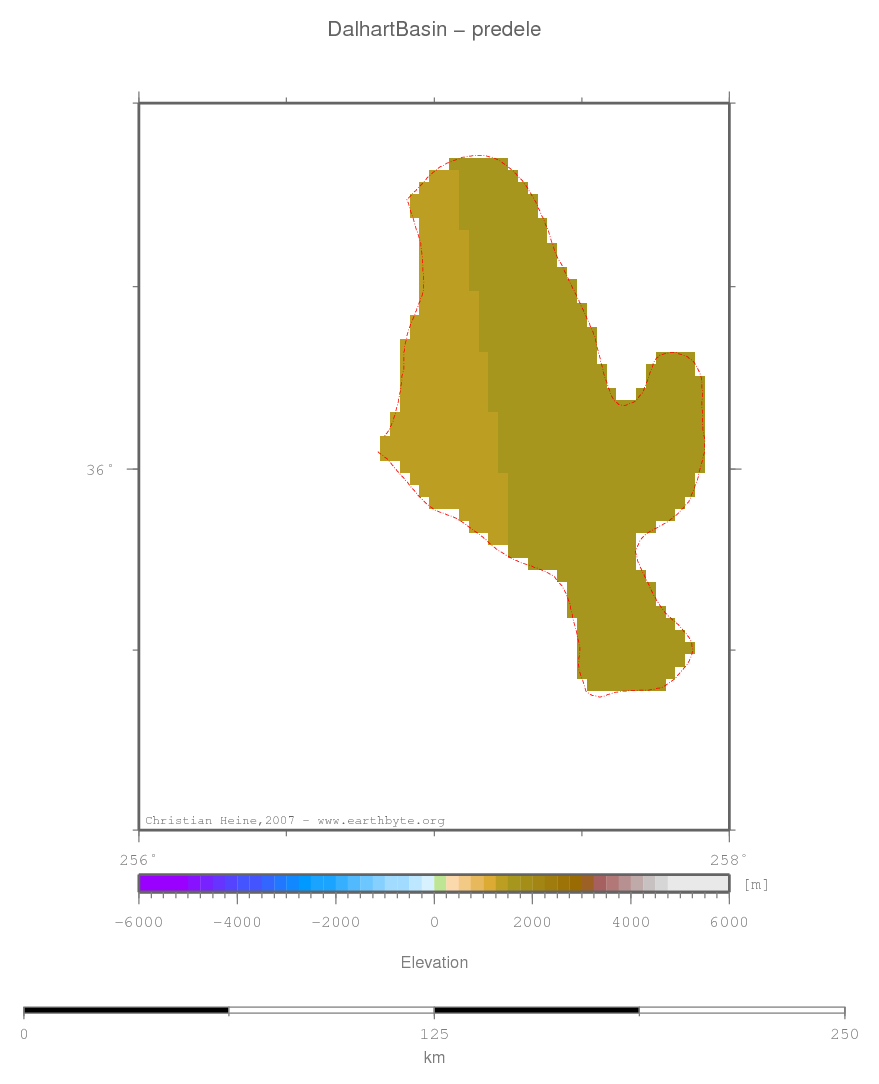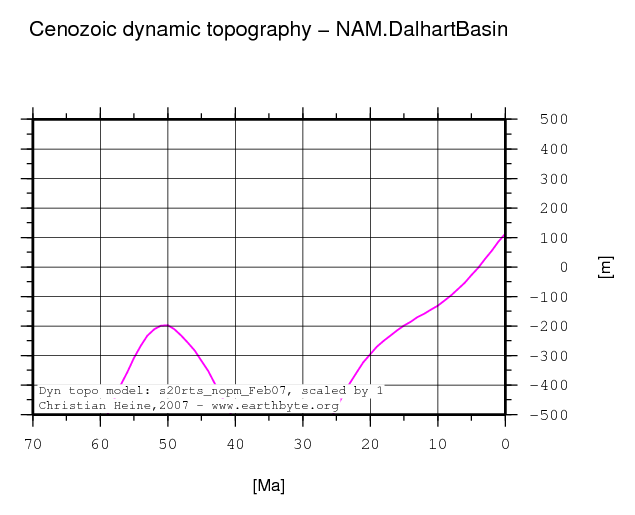
The dynamic topography history for the basin is derived by tracking the
basin centroid. The paleo-location for this point
is computed using the EarthByte plate kinematic framework
rotating the position back in time.
The dynamic topography model is derived from the S20RTS seismic tomography model
(Ritsema et al., 99) by converting seismic velocites to density anomalies
using an empirical scaling factor of 0.25. The density anomalies are then advected back
in time to compute mantle flow with plate motions superimposed (using the
EarthByte plate rotation framework)
as surface boundary conditions. The dynamic topography is then derived from the
computed density distribution using a free upper boundary. For details regarding the
methodology see the following papers:
-
B. Steinberger, H. Schmeling, and G. Marquart. Large-scale lithospheric stress field and
topography induced by global mantle circulation. Earth Planet. Sci. Lett., 186:75-91, 2001.
doi: 10.1016/S0012-821X(01)00229-1.
-
B. Steinberger. Effects of latent heat release at phase boundaries
on flow in the Earth's mantle, phase boundary topography and dynamic
topography at the Earth's surface. Phys. Earth Planet. Int., 164:2-20, 2007.
doi: 10.1016/j.pepi.2007.04.021.
↑ back to the top
|

